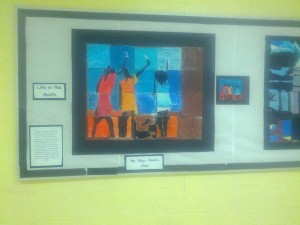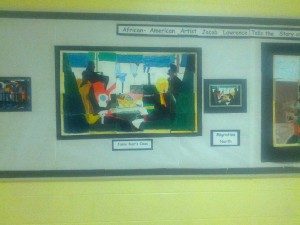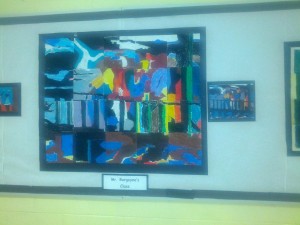Copyright News from 2012
Laura Quilter, UMass Amherst Libraries
Version 1.1. November 28, 2012
I. Teaching & Libraries
Cambridge University Press v. Patton (Georgia State Univ. ereserves)
Georgia State University was sued for its ereserves by university presses, bankrolled by CCC. They changed their policy mid-stream, and because the publishers were only seeking an injunction, not damages (all they could get from a public university), the court looked only at the new policy. The court found only 5 infringements out of the original claims: The publishers dropped 25-ish claims themselves; the court kicked out 18 claims that the publishers couldn’t prove ownership on; the court said 9 claims were “de minimis” because students had never accessed them; the court found that 42 claims were non-infringing fair uses; leaving only 5 to be found infringements. The court then ordered the publishers to pay GSU’s attorneys fees, which was a bit of a slap.
Several key holdings were considered “wins” by the library community, including (a) dismissal of the relevance of the so-called “Classroom Guidelines”; and (b) fair use analysis that public universities would basically always get a plus on the first use of the fair use factor for e-reserves. The library community was a bit less happy with the court’s reliance on a quantitative rule-of-thumb (10% of 1 chapter), and the suggestion that if CCC had established a relevant permissions market, then the fourth fair use factor would have gone the other way.
So, a highly favorable win for Georgia State University, but publishers are appealing (bankrolled by CCC).
- On appeal, the publishers hope that some of the legal conclusions will be reversed. In particular, they are probably going to try to get the 11th Circuit to apply the “Classroom Guidelines” to the “fair use” analyses of 47 claimed infringements, and to state that the “copy shop” cases apply here. (74 claims of infringement were initially reviewed, but 18 were not clearly owned by the publishers, and 9 were never viewed by students so were “de minimis” infringements.) 5 of the 47 were found to be infringing; 42 were found to be fair uses.
- On appeal, the libraries hope that the court would soften or eliminate the District Court’s language that (a) encourages libraries to apply a “10% or 1 chapter” rule on the third factor, and (b) encourages CCC to develop lots of very specific permissions markets.
The publishers are appealing the decision; look for decision in 2013.
Assn for Information Media & Equipment v. University of California (UCLA video streaming)
The Assn for Information Media & Equipment (AIME) with Ambrose Video Publishing jointly sued UCLA for digitizing DVDs and streaming entire movies in their course management system. The Court dismissed the case in 2011, ruling that AIME lacked associational standing (it doesn’t hold copyrights for its members); UCLA had sovereign immunity; and, principally, the agreements covered “public performance”, which is what the streaming looked like. A Second Amended Complaint followed, which was also dismissed (September 28, 2012).
The final written order was released in late November 2012. It basically affirmed all of the previous holdings, and added a bit more detail to the fair use analysis. Specifically, the court found that on the fourth factor, the DVD streaming did not substitute for a purchase and caused no market harm. On the second factor, the nature of the original copyrighted work, the court found that factor to be neutral, because although highly creative works were streamed, they were in the context of teaching. Although it was clear from the factor-by-factor analysis that the court felt the uses were fair, the court did not ultimately make a decision about fair use—concluding only that since there was a plausible case for fair use, the officials could not be held liable for copyright infringement.
No word on appeals.
Canadian Copyright Pentalogy (July 12, 2012):
- ESA/C v. SOCAN, 2012 SCC 34. Downloading videogame with a song. Technological neutrality for online delivery mechanisms: Tariffs for reproduction, but not for communication to the public.
- Rogers v. SOCAN, 2012 SCC 35. Streaming of a song to a user is a “communication to the public”; SOCAN can collect licensing fees .
- SOCAN v. Bell, 2012 SCC 36. Fair dealing! Online “previews” of songs is “research”, and covered by “fair dealing”.
- Alberta v. Access Copyright, 2012 SCC 37. Fair dealing! In higher education. Copying materials for classroom use is “fair dealing” for “research or private study”.
- Re:Sound v. MPTAC, 2012 SCC 38. Performers & sound recording owners do not get royalties for use in soundtracks. Re:Sound had wanted a new right, but didn’t get it.
Section 1201 Rulemaking
The Copyright Office just released its triennial rulemaking on exceptions to the “anticircumvention” provisions – i.e., the legal restrictions on ripping DVDs, jailbreaking iPhones, and hacking ebooks.
There are two pieces of good news for libraries in the most recent round:
(1) An expansion of the “teaching” exemption for DVDs, allowing K-12 teaching, and more generally a “fair use” approach. The previous exemption
(2) An expansion of the print-disabled ebook exemption, allowing disabled owners of ebooks to hack their ebooks on whatever format they own to get at read-aloud technologies. The previous rulemaking had limited accessibility hacking to only those works that were not accessible in any format – which effectively required print-disabled people to own one of every kind of ebook reader.
Section 108 Hearings
Two days of hearings on Section 108 reforms have been scheduled for early 2013 in New York (they were originally scheduled for November 2012, but postponed due to Hurricane Sandy). The Copyright Office would like to get Section 108 updated. Libraries fear that publishers will load down legislation with provisions unfriendly to library and educational use, and in particular Copyright Office support for licensing. Possibility of consensus on archival and preservation copying, but consensus on “ILL” will be more difficult.
II. Mass Digitization, Orphan Works, Public Domain
Authors Guild v. HathiTrust (mass digitization)
- Big win! (1) The Authors Guild lacks standing to represent individual members; (2) HathiTrust purposes are definitive fair uses! Including preservation; searching; text mining; and provision of copies to print-disabled users.
- The Authors Guild has filed their intent to appeal. Many commentators feel they are not in a good position, because their strongest argument was HathiTrust’s orphan works program, which was suspended, and is not at issue.
Authors Guild v. Google (mass digitization)
- Pre-2012: Authors Guild & publishers sued Google for its BookSearch program. They attempted to settle by establishing a large “Book Rights Registry” and licensing program, but the Dept of Justice, ALA, and others weighed in on antitrust and other public interest problems; Judge Chin rejected the proposed settlement. This year:
- Judge Chin granted class certification to the Authors Guild, despite the complaints of academic authors and others who claimed their interests were not adequately represented by the Authors Guild. Google has now appealed to the Second Circuit the class certification, and reasserted more strongly its fair use claim for digitizing for search.
- The Publishers settled (in a secret settlement, although some authors groups are suing to make the settlement terms open).
- The Authors Guild persists in its claim. Its argument is looking increasingly sketchy.
Golan v. Holder (copyright restoration for foreign works)
- “Uruguay Round” (URAA 1994) treaty which re-established copyright protection for foreign works that were in the public domain. J. Ginsburg wrote the 6-2 opinion (Breyer & Alito dissented; Kagan recused).
- Numerous works in the public domain in the US were taken out of the public domain, including Prokofiev’s “Peter and the Wolf”, Stravinsky, H.G. Wells, “Metropolis”, etc.
- The Supreme Court basically said that any grant of copyright removes things from the public domain, so this was no different.
Copyright Office “Orphan Works” Notice of Inquiry (late January, 2013)
- The Copyright Office is inquiring about what has changed since the last iteration of the orphan works act. They are interested in thoughts about whether orphan works problems are still as intractable as they were viewed prior to HathiTrust, Google, etc. The library perspective on latest iterations of the orphan works legislation was not favorable, viewing that the legislation had become too complex and was not likely to help libraries and users.
European “Orphan Works” Legislation
- Europe passed Orphan Works legislation, but exempted photographs, and national legislation that dealt with the issues (especially France’s). The legislation does not allow “commercial” uses but does allow museums, archives, and libraries, to engage in digitization.
Jennifer Urban, “How Fair Use Can Help Solve the Orphan Works Problem”
- (2012) paper. Urban argues that using the second factor (“nature of the work”) and the fourth factor (no current commercial exploitation) would justify use of orphan works.
- http://papers.ssrn.com/sol3/papers.cfm?abstract_id=2089526
III. First Sale / Licensing
Kirtsaeng v. Wiley
- Enterprising student Kirtsaeng bought textbooks in Thailand (where they were cheap) and sold them on eBay to students in the US (where they were expensive). The publishers sued, saying this violated their rights to control the import of works into the US. Kirtsaeng says this was protected by the first sale doctrine (Section 109)—which says that after the copyright holder has sold a copy of a work, they can’t control the downstream re-sales of that copy. The US government weighed in, arguing that if the publisher’s import rights trump Section 109, consumers’ rights to resale are still protected by an older legal principle (“exhaustion”) that is only partly embodied by Section 109.
- Why do we care? (a) Lots of works made overseas—all children’s books, art books, foreign films, imported CDs; and (b) lots of copyrighted works included in other things made overseas, such as cars and toaster ovens (with copyrighted electronics) and practically anything with a printed label or design element (watches, shampoo bottles). Say goodbye to garage sales and library booksales, if the publishers win!
- Oral argument was held October 29, Monday. The good news is that members of the Court expressed that there was sufficient ambiguity in the statute to support Kirtsaeng’s position; there were real policy problems with the publisher’s position; and an idea the government’s position was not the most straightforward way to go here. I felt more optimistic after reading the transcript of the hearing than I did before the hearing. Two favorite moments: “Oh, fair use,” J. Breyer said, in response to the publisher’s argument that fair use would cover libraries that needed to loan materials; and “Piratical is a mischievous word”. Decision expected probably next year, with everybody gearing up for a legislative fight afterwards.
Capitol Records v. ReDigi (digital first sale)
- ReDigi is a Massachusetts-based “MP3 reseller”, which lets you resell iTunes MP3s. They have a technology to strip the MP3s from your computer, and Apple iTunes’ license agreement does not clearly prohibit the resale of their MP3s. They launched in October 2011.
- Capitol Records sued in January 2012, arguing that selling the MP3s involves making unauthorized copies, which is a violation of the reproduction right. ReDigi argues that the First Sale doctrine applies, and the copies are not new, persistent copies, but incidental copying to a lawful use.
- Preliminary injunction denied, which was a victory right there. Likely headed to trial.
- http://dockets.justia.com/docket/new-york/nysdce/1:2012cv00095/390216/
- Should this case find for first sale, it will be the first strong digital first sale case. A case out of the 9th Circuit, Vernor v. AutoDesk, has been confusingly applied. Probably one more circuit (imagine 4th or 7th) to weigh in and then it would go to the Supreme Court.
IV. Disability / Accessibility
- Authors Guild v. HathiTrust (mass digitization). The Court was extremely positive about the “Chafee Amendment’ (17 USC 121, 1996) which allows “authorized entities” to reproduce or distribute copies in special formats for readers with print disabilities. This was one of the strong arguments that the judge cited in HathiTrust as making the activities so clearly fair use.
- Section 1201 Rulemaking – Print disabled readers are permitted to disable technical protection measures to access ebooks on their readers. Complaints from the prior Section 1201 rulemaking were that disabled users would effectively have to own all the possible proprietary ebook readers.
- WIPO Meeting – Several days of meetings; no resolution!
V. Fair Use
- Prince v. Cariou (appropriation art fair use) – SDNY judge held that Richard Prince’s works, some worth millions, could be seized and ultimately destroyed as copyright infringements of Patrick Cariou’s photographs. On appeal to 2d Circuit; decision any time!
- “Best Practices in Fair Use”: from “Documentary Filmmakers” to “Academic and Research Libraries”, with stops along the way for Poetry, Dance-Related Materials, Music, Online Video, Open CourseWare, Scholarly Research in Communication, Media Studies Publishing, Teaching for Film and Media Educators, Media Literacy Education, and Journalism. What’s next?
VI. Other Items of Note
- Harvard, Good Practices for University Open-Access Policies
- YouTube ContentID reforms : Appeals process + manual review of edge cases
- Twitter DMCA 512 takedown notices going to Chilling Effects
- A “6-strikes” rule on the verge of being implemented by ISPs.
- WNET v. Aereo – TV broadcasters suing Aereo, which allows Internet playback of over-the-air broadcasts of TV.



